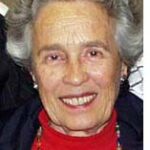By Eileen Wingard

LA JOLLA, California — Although many composers in the past have imitated the sounds of water in their music, such as Vivaldi in The Four Seasons, Beethoven in the Pastorale Symphony, Mendelssohn in the Fingal’s Cave Overture and Respighi in the Fountains of Rome, never has a basin of water been incorporated as an instrument of the orchestra.
Some composers have inserted the recorded sounds of nature in their works, such as Respighi’s Pines of Rome, with its authentic bird calls, and Hovannes’ And God created Great Whales, with the recorded vocalizations of those giant sea creatures. However, the brilliant Chinese composer, Tan Dun, is probably the first to treat water as a solo instrument, in his Concerto for Water Percussion and Orchestra.
Steven Schick, music director of the La Jolla Symphony and Chorus, was the remarkable percussion soloist in this original work. He was assisted by two talented percussionists, his graduate students, Fiona Digney and Rebecca Lloyd-Jones. Michael Gerdes, assistant conductor of the LJS&C was on the podium.
Large hemispherical, transparent water basins, in front of each percussionist, served as their water instrument. A variety of sound textures were achieved by splashing, popping and dripping water into these basins, as well as by playing on various percussion instruments immersed in the water. At one point, several wooden bowls were floated on the water surface and played on with drumsticks. Along with these unique sounds, the orchestral support provided a coherent musical entity.
The Prelude began with the soloist entering, bowing soft, eerie sounds on the waterphone, a metal instrument containing water. Suddenly, some trombones punctuated the serenity.
The three movements which followed the Prelude, progressed from slow to fast. There were some interesting chirping sounds when the woodwinds played on their mouthpieces. The first movement featured a virtuoso cadenza, with Schick managing to produce a large variety of captivating sounds from his water basin. The final dramatic moment of the concerto had Schick lifting up a sieve filled with water, and like rain bursting from a giant cloud, strings of water cascaded into the basin.
This was a contemporary piece worth hearing again, as the late Kurt Masur, former conductor of the New York Philharmonic, felt, when he took this work on the orchestra’s tour of Latin America.
The concert opened with Lineage by Zosha Di Castri, a Canadian composer. It was a well-crafted piece, with interesting orchestration and unusual use of quarter tones. However, its title and the introductory information about its connection to the composer’s Italian grandparents, was difficult to identify in the music.
The final work on the program, Igor Stravinsky’s Petrushka, with its many percussive passages, precursors of the composer’s Rite of Spring, felt comfortably familiar with its Russian folk tunes and organ grinder ditties. Under conductor Schick, the work was well-performed and showcased the high quality of the orchestra’s principal players.
The concert took place on Saturday, November 3 and Sunday, November 4 in Mandeville Auditorium on the UC San Diego campus. The next concert is scheduled for December 8 and 9 and will feature Handel’s Messiah, the Florence Price Violin Concerto and Qingqing Wang’s Between Clouds and Streams.
*
Wingard, a retired violinist with the San Diego Symphony, is a freelance writer specializing in coverage of the arts. She may be contacted via eileen.wingard@sdjewishworld.com
Hi, Eileen,
Thank you for reviewing our season-opener! We appreciate your interest.
Best,
Diane
Diane Salisbury
Executive Director
La Jolla Symphony & Chorus
858-822-3774